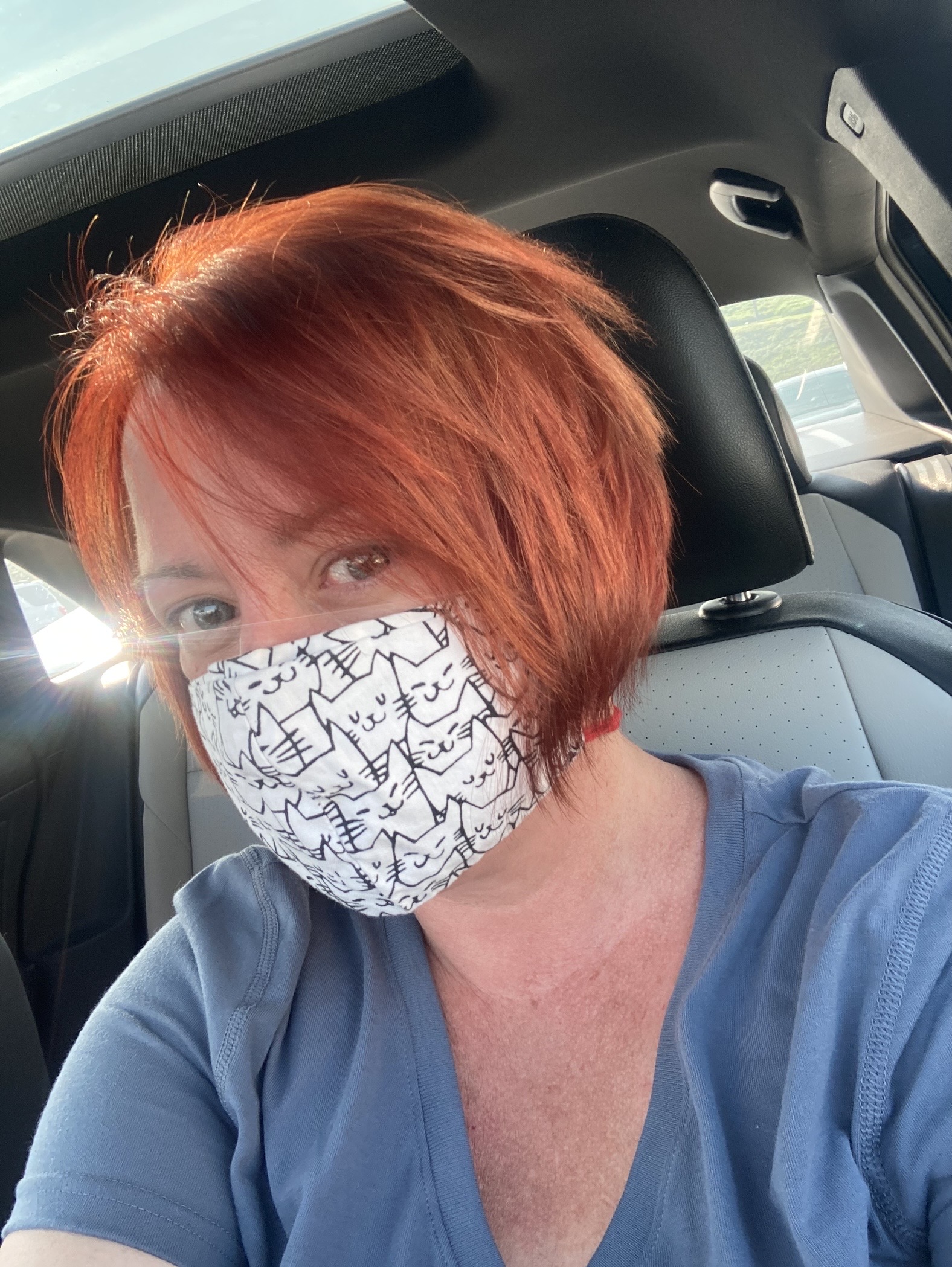Modern dating can be severed into two eras: before the swipe, and after. When Tinder and other dating apps took off in the early 2010s, they unleashed a way to more easily access potential love interests than ever before. By 2017, about five years after Tinder introduced the swipe, more than a quarter of different-sex couples were meeting on apps and dating websites, according to a study led by the Stanford sociologist Michael Rosenfeld. Suddenly, saying “We met on Hinge” was as normal as saying “We met in college” or “We met through a friend.”
The share of couples meeting on apps has remained pretty consistent in the years since his 2017 study, Rosenfeld told me. But these days, the mood around dating apps has soured. As the apps seek to woo a new generation of daters, TikTok abounds with complaints about how hard it is to find a date on Tinder, Hinge, Bumble, Grindr, and all the rest. The novelty of swiping has worn off, and there hasn’t been a major innovation beyond it. As they push more paid features, the platforms themselves are facing rocky finances and stalling growth. Dating apps once looked like the foundation of American romance. Now the cracks are starting to show.
In 2022, a Pew Research Center survey found that about half of people have a positive experience with online dating, down from October 2019. With little success on the apps, a small but enthusiastic slice of singles are reaching for speed dating and matchmakers. Even the big dating apps seem aware that they are facing a crisis of public enthusiasm. A spokesperson for Hinge told me that Gen Z is its fastest-growing user segment, though the CEO of Match Group, the parent company of Tinder and Hinge, has gone on the defensive. Last week, he published an op-ed headlined “Dating Apps Are the Best Place to Find Love, No Matter What You See on TikTok.” A spokesperson for Bumble told me that the company is “actively looking at how we can make dating fun again.”
In part, what has changed is the world around the apps, Rosenfeld said. The massive disruptions of the pandemic meant that young people missed out on a key period to flirt and date, and “they’re still suffering from that,” he told me. Compared with previous generations, young people today also have “a greater comfort with singleness,” Kathryn Coduto, a professor of media science at Boston University, told me. But if the apps feel different lately, it’s because they are different. People got used to swiping their hearts out for free. Now, the apps are further turning to subscriptions and other paid features.
Tinder, for example, launched a $499-a-month premium subscription in December. On Hinge, you can signal special interest in someone’s profile by sending them a “rose,” which then puts you at the top of their feed. Everyone gets one free rose a week, but you can pay for more. Hinge users have accused the app of gatekeeping attractive people in “rose jail,” but a spokesperson for the app defended the feature: Hinge’s top goal is to help people go on dates, she said, claiming that roses are twice as likely to lead to one.
It’s the same process that has afflicted Google, Amazon, Uber, and so many other platforms in recent years: First, an app achieves scale by providing a service lots of people want to use, and then it does whatever is needed to make money off of you. This has worked for some companies—after 15 years, Uber is finally profitable—but monetization is especially tricky for dating apps. No matter how much you fork up, apps can’t guarantee that you will meet the love of your life—or even have a great first date. With dating apps, “you’re basically paying for a chance,” Coduto told me. Paying for a dating-app subscription can feel like entering a lottery: exciting but potentially a waste of money (with an added dose of worry that you look desperate). And there has always been a paradox at the core of the apps: They promise to help you meet people, but they make money if you keep swiping.
Over the past few years, the big dating companies have faltered as businesses. Tinder saw its paid users fall by nearly 10 percent in 2023, and the big apps have been beset by layoffs and leadership changes. Bumble and Match Group have seen their stock prices plummet as investors grow frustrated. Perhaps the biggest problem that the apps might face is not that people are abandoning them en masse—they aren’t—but that even a small dip could prove detrimental. The current big apps’ edge relies on lots of people using them. Apps such as Tinder and Grindr “have an enormous network advantage over newcomers,” Rosenfeld said, for the same reasons Facebook does: It’s not that they’re amazing; it’s that they’re giant. If you want to meet other single people, the apps are where other single people are.
So far, the big apps’ efforts to avoid this doom loop have involved the same basic feature that has been around since the beginning: swiping. “We’re essentially at a tipping point for at least this version of the technology,” Coduto said. Like so many other industries, dating apps swear they have the answer: AI. George Arison, the CEO of Grindr, told me that the app plans to use AI (with users’ permission) to suggest chat topics and power an “AI wingman” feature, and to scan for spam and illegal activity. Hinge’s CEO has suggested that AI will help the app coach users and enable people to find matches, and a product leader at Tinder said last month that the app has used AI to power safety features, adding that the technology can help users select their profile photos.
But AI also holds the potential to unleash chaos on the apps: Bot-written messages and bot-written profiles don’t exactly sound like a recipe for finding love. For Gen Z, the future may hold a grab bag of sliding into DMs, reluctant swiping, and generally doing what humans have always done—seek companionship and love through any means they can muster. With all the time spent online now, people are finding love on Strava, Discord, and Snapchat, among many other sites. In a sense, any app can be a dating app.
Traditional dating apps might be most useful not to young people but to those middle-aged and older, with money to spare. They are more likely to be part of “thin” dating markets, or segments of the population where the number of eligible partners is relatively small, Reuben Thomas, a professor at the University of New Mexico, told me. Online dating is “really useful for people who don’t have that rich dating environment in their offline lives,” Thomas said.
In this way, the future of dating apps may look more like their past: a place for older daters to go after exhausting other options. In the 2000s, the heyday of OkCupid, eHarmony, and desktop dating, middle-aged people were the power users, Thomas said. Millennials had their fun on Tinder in the 2010s; many found lasting relationships. But as a top choice for young people looking for love, dating apps may have been a blip.
The apps would be fine if it wasnt for the enshittification and gamification aspect of it. Pay to unlock swipes and boosts and all that nonsense it so dystopian. We need non profits to start running pro social apps that are actually healthy
I stopped using all of them. I refuse to do the “pay to unlock all matches” and “send a rose/superlike” bullshit. It’s all demeaning.
deleted by creator
Can’t understand why in the fuck people link to paywalled articles…
I know how to deal with these… but anyway we should normalize the use of already cleaned urls…
…by down voting any posts with a paywall etc. Let’s keep Lemmy content decent.
Reader Mode works on Apple devices if you’re using one.
Pretty sure they’d be more successful if they had actual women who weren’t Indian Ocean trade corridor scam artists that the corpos insist on shoving onto you even if you do everything possible to say “I only want to see people nearby me!”
Seriously, if I didn’t know better I’d assume it was just that I’m some kind of omega stud by east african, Indian, and SEAsian standards
Definitely agree with the article’s sentiment, but what else is there these days?
The last time I saw someone ask this question, the general response was to start participating in new hobbies and meeting people. Considering that our time is typically already packed full if you try and eat healthy, have a job, go to the gym, hang out with friends there isn’t a whole lot of extra time for new hobbies and activities. That response always felt so empty like if I had that much free time I would have already been doing something fun with it. Dating apps seem to me like the only option to date outside your existing social circle. It’s a sign of the times and our lack of time.
eat healthy, have a job, go to the gym, hang out with friends
- Cook a healthy meal and share it with other people. Meals are a perfect time to socialise. I met my partner at a Christmas lunch a decade ago for example.
- Find a job where you interact with other people, avoid jobs where you sit in a home office all day by yourself.
- Personally I think gyms are terrible. Some sort of sport (even just group running) is more fun, a better workout because competition will drive you to work harder, and you will meet new people.
- Don’t just hang out with friends. Encourage everyone in your social circle to invite new people into the group. Most of them won’t be a perfect fit and will naturally orbit out, but a few will stick.
You know, people can actually stop using most of these apps if they really wanted to. At will.
I’m just utterly speechless. How do you come up with these solutions?
Down voted for the link to a paywall article.






